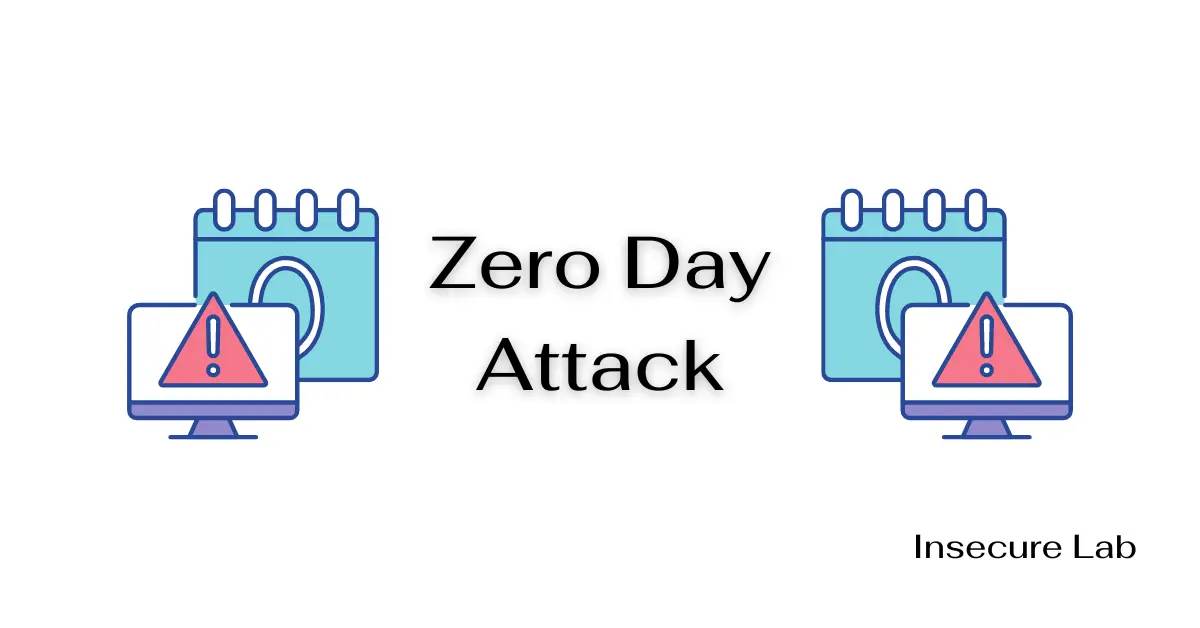🔍 Search
📥 Subscribe
Zero Day Attack

Table of Contents
This article takes an in-depth look at zero-day attacks, covering their definition, various types, and real-world examples.
What is Zero Day Attack?
A Zero Day attack, often referred to as a zero-day exploit, is a cyberattack that exploits a vulnerability in software, hardware, or firmware before the vendor releases a fix for it. The term "zero-day" indicates that the vulnerability is exploited on the very same day it becomes known, providing no time for the targeted entity to prepare a defense. Essentially, zero-day attacks take advantage of the lag between the discovery of a vulnerability and the availability of a patch, leaving systems exposed during this critical window.
Types of Zero-Day Attacks
Zero-day attacks can manifest in various forms, each leveraging the vulnerability to achieve distinct malicious objectives. Here are some common types of zero-day attacks:
1. Remote Code Execution (RCE)
This type of attack allows an attacker to execute malicious code on a victim's system remotely. By exploiting a vulnerability, the attacker gains control over the target system, often leading to unauthorized access, data theft, or further compromise.
2. Denial of Service (DoS)
Zero-day DoS attacks flood a system, network, or service with excessive traffic or requests, causing it to become unavailable to legitimate users. These attacks can be disruptive and impactful, particularly when aimed at critical infrastructure.
3. Privilege Escalation
Attackers exploiting privilege escalation vulnerabilities can elevate their access privileges on a compromised system. This allows them to access resources and perform actions that were initially restricted by the system's design.
4. Data Exfiltration
In this scenario, zero-day vulnerabilities are exploited to gain unauthorized access to sensitive data, which is then exfiltrated for malicious purposes, such as selling it on the dark web or using it for extortion.
Examples of Zero Day Attacks
-
Stuxnet (2010)
Perhaps one of the most famous zero-day attacks, the Stuxnet worm targeted Iran's nuclear facilities. It exploited several zero-day vulnerabilities in Windows and industrial control systems. Stuxnet was designed to sabotage centrifuges used in uranium enrichment, and its discovery revealed the potential for nation-state cyberattacks on critical infrastructure. -
Adobe Flash Player Vulnerabilities
Adobe Flash Player was notorious for its frequent zero-day vulnerabilities. Hackers would exploit these vulnerabilities to deliver malware through compromised websites, infecting users who visited these sites. -
Equifax Data Breach (2017)
The Equifax breach is a prime example of a zero-day attack with serious consequences. Attackers exploited a vulnerability in the Apache Struts web application framework, gaining unauthorized access to sensitive data of nearly 147 million individuals. -
Microsoft Exchange Server (2021)
A recent example involves a series of zero-day vulnerabilities found in Microsoft Exchange Server. These vulnerabilities allowed attackers to gain unauthorized access to email accounts and install malware. The attack affected thousands of organizations globally.
Summary
Zero-day attacks present an ongoing challenge in the ever-evolving landscape of cybersecurity. These attacks capitalize on vulnerabilities that are not yet known to software vendors, making them difficult to predict and prevent. However, with vigilant patch management, network segmentation, user education, and proactive security measures, the impact of zero-day attacks can be minimized.
